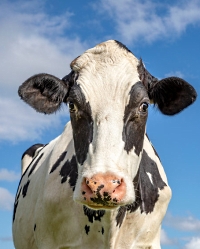|
To view this email as a web page, click here. |
 |
|
Welcome
We have some suggestions for ensuring that your Linux cluster is operating securely.
This month's highlighted publication describes methods to unravel the glycation of milk proteins.
If you have a recent publication that you would like us to consider for an upcoming Newsletter, please
send us a PDF or a URL.
Mascot tip of the month concerns EST FASTA files
Please have a read and feel free to contact us if you have any comments or questions. |
|
|
|
 |
 |
 |
|
Mascot cluster installation security on Linux
Mascot Server has been designed such that each search can be divided into parts that run independently, allowing parallel execution on a networked cluster of PCs running Windows or Linux.
For Linux, the default is to run Mascot as root, but since recent distributions of Linux often have the root account disabled, we have some tips for running Mascot cluster more securely from the non-root account.
- If the nodes of the cluster are connected to a private Ethernet switch, where the subnet is only accessible to the master node, then you do not have a real security concern. But if you don't have a private subnet, anyone within the network could have access to the nodes. In this case a more secure arrangement is to run as a less privileged user.
- Additionally, it is a good idea to restrict access by IP address, such that only connections from the specified source IP or hostname are allowed.
- Mascot uses a custom TCP protocol in port 5001, and the messages are transmitted unencrypted. To secure traffic through port 5001, you should set up a virtual private network (VPN) between the master and worker nodes.
Go here to read about these and other tips for securing your Mascot cluster.
|

|
 |
 |
 |
|
Featured publication using Mascot
Here we highlight a recent interesting and important publication that employs Mascot for protein identification, quantitation, or characterization. If you would like one of your papers highlighted here please send us a PDF or a URL.
|
|
|
Identifying glycation hot-spots in bovine milk proteins during production and storage of skim milk powder
Inge Gazi, Vojtech Franc, Sem Tamara, Martine P. van Gool, Thom Huppertz, Albert J.R. Heck
International Dairy Journal, 129 105340 (2022)
Heat treatment of milk, though needed for safety, can also generate potentially immunogenic and allogenic glycated species. To better understand the structures of these species, the authors investigated protein glycation during the production and storage of skim milk powder.
The intact proteins from thermised and preheated milk and fresh and aged milk powders were analyzed by full MS, MS/MS with electron transfer dissociation (ETD) and MS/MS with ETD supplemented by higher-energy collisional dissociation (EThcD). The database for searching contained the six most abundant bovine milk proteins and a range of proteoforms including the most commonly occurring genetic variants and expected phosphorylation states of the main milk proteins in Dutch Holstein-Friesian cows. For each basic proteoform, the masses of glycated proteoforms were in a range of 1-12 hexose residues.
The four samples were also analyzed by a peptide-centric LC-MS/MS approach using trypsin, chymotrypsin, GluC, AspN, and combinations of these. The two proteins most susceptible to glycation were found to be αS2-casein and β-lactoglobulin and, for the aged powder, up to 5 lactose residues per αS2-casein molecule were detected.
For these two proteins, up to 9 glycation sites were identified, with residues Lys141 in β-lactoglobulin and Lys173 in αS2-casein detected at 37% and 100% occupancy in the preheated milk. The authors also determined that the majorly glycated lysine residues in the most abundant bovine milk proteins were often preceded by a stretch of positively charged amino acids, and at the C-terminal end of the glycated lysine a stretch of mostly aliphatic and hydrophobic amino acids.
|
 |
 |
 |
 |
|
Mascot Tip
Some of the larger EMBL EST database files on the EBI FTP server went missing for a few weeks earlier this year. We're happy to report that they have now been restored, and you can select any of them for searching using Database Manager. If you have a very old Mascot Server, and are configuring databases manually, the relevant information is here.
Although changes in DNA sequencing methodology mean that the content of Expressed Sequence Tag databases is fairly static, they still represent a valuable repository of sequence data for organisms with unsequenced genomes. More information can be found in this short blog article.
|

|
 |
 |
 |
|
About Matrix Science
Matrix Science is a provider of bioinformatics tools to proteomics researchers and scientists, enabling the rapid, confident identification and quantitation of proteins. Mascot software products fully support data from mass spectrometry instruments made by Agilent, Bruker, Sciex, Shimadzu, Thermo Scientific, and Waters.
Please contact us or one of our marketing partners for more information on how you can power your proteomics with Mascot.
|
 |
 |
|
|